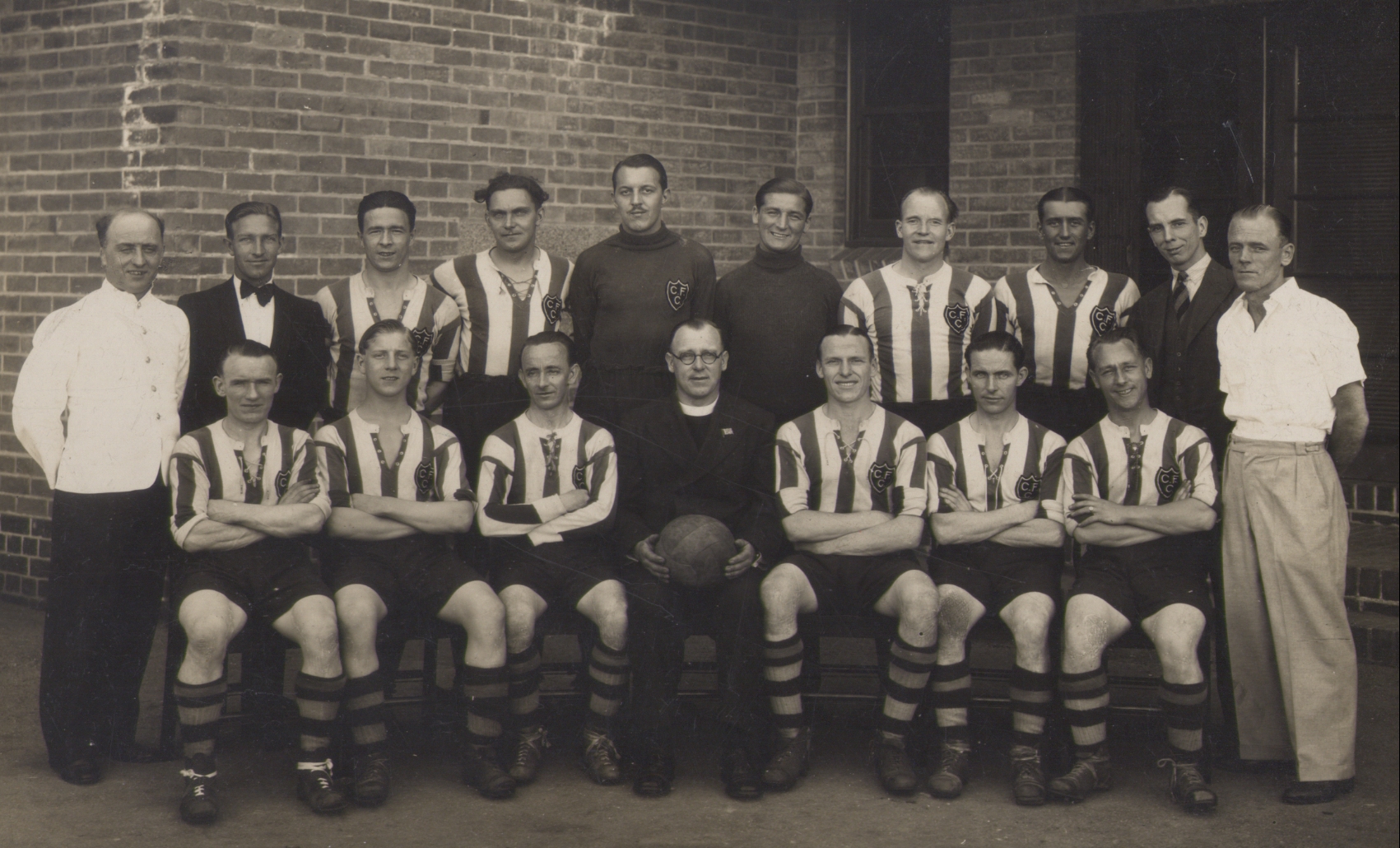
Neil McAllister in the Ceramic Football Club Team: Melbourne Shield Competition Winners 1935 to 1938"
1938
The details on the photo are:
Ceramic F.C. (Vict. Dept)
1938
Winners
Melbourne Shield Competition
1935-36-37-38
****************
Neil McAllister, a steward, was among the 656 men, women and children who died when Ceramic was sunk by a U. boat. All the men on this photo were killed.
There is an excellent and very detailed account of what happened to the Ceramic in WWII in "The Liners of Liverpool Part II" by Derek M. Whale, Countyvise Limited, 1 & 3 Grove Road, Rock Ferry Birkenhead, Wirral, Merseyside, L42 3XS: 1987: ISBN:0 907768 14 8: £2.95: pages 104 - 115, from which this very short account is taken, with grateful acknowledgement.
The S.S. Ceramic, 18,150 tons, was launched by the White Star Line on 11th December 1912. She survived WWI as a commercial and troop ship in spite of two U. boat attacks. In 1934, the ship became the property of the Shaw Savill Line and was remodernised in 1936. She was the largest ship trading between Britain and Australia.
On a very stormy and wet night of 6th December 1942, the worst in living memory at the time, the Ceramic was torpedoed four or five times in the Atlantic with the loss of 278 crew and 378 passengers. She was west of the Azores - alone and unescorted. The ship took an hour to sink. A Royal Mail Freight Liner, Palma, fought the weather for several hours in a fruitless search but in the end had to give up.
There was only one survivor, Sapper Eric Munday, aged 20, who gave a vivid and harrowing account of the voyage and wrecking. The ship sailed on November 23rd for Australia. Eric was on his way to South or West Africa with the Royal Engineers. There was a convoy of ships but Ceramic, being a fast ship, left the convoy and headed towards the Azores on her own.
The first torpedo hit at about 8.15 pm on the 6th. There followed two more at five or ten minute intervals. Two more were fired after about three hours. Eric found himself in a lifeboat with 45 to 50 others and he rowed through the night. His lifeboat collapsed and he clung to wreckage. He was thrown a rope by two sailors and hauled into the German U. boat which had caused the damage; it was about midday on the 7th. The U. boat captain had been ordered to return to the site of the sinking and to find out where the Ceramic was heading by taking a survivor. He told his crew they were to take the first to come nearest to them. That first person was Eric Munday. Everyone else was left to die.
The Shaw Savill Line named one of their later ships Ceramic. It was built in 1948: 15,896 tons gross.
Author: Anon
Tags
Year = 1938
Event = Sporting
Gender = Male
People = Group
Sport = Ball
Work = Military
Extra = Formal Portrait
Extra = 1930s
Copyright © 2015 The Buckley Society
